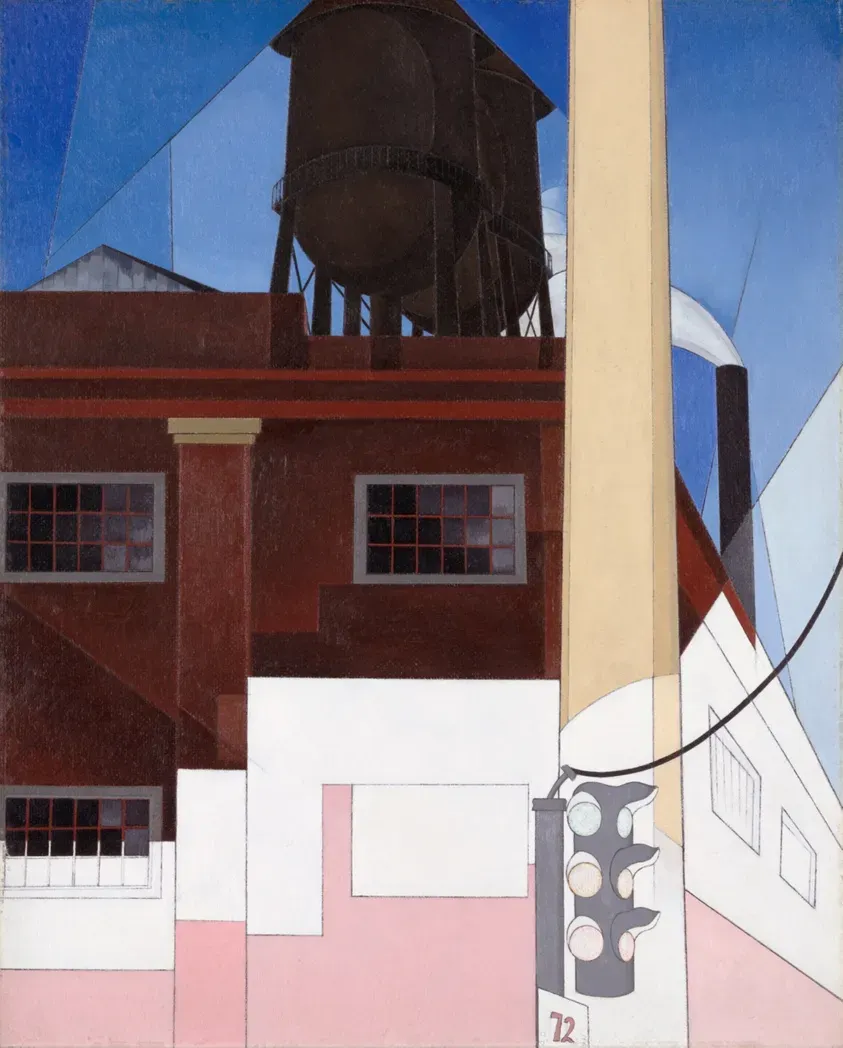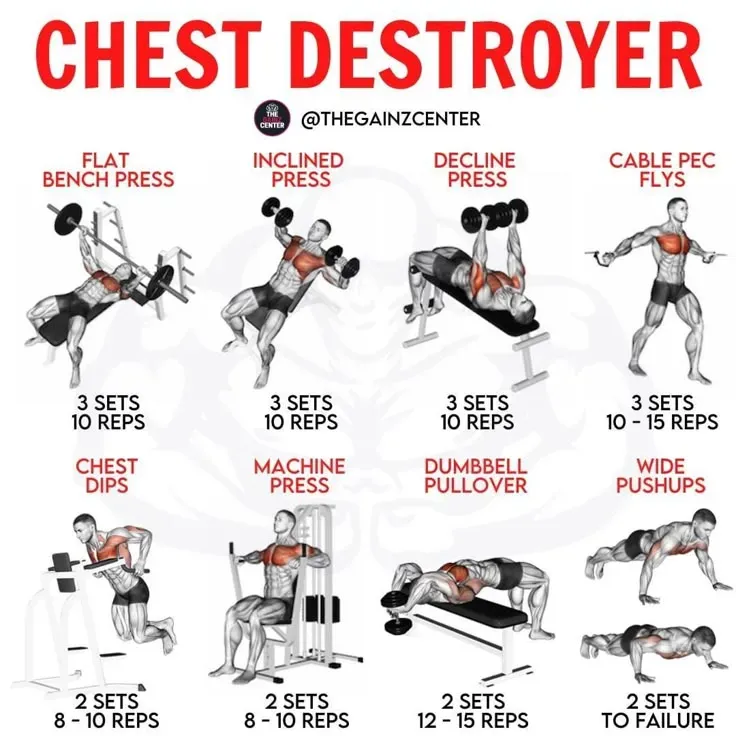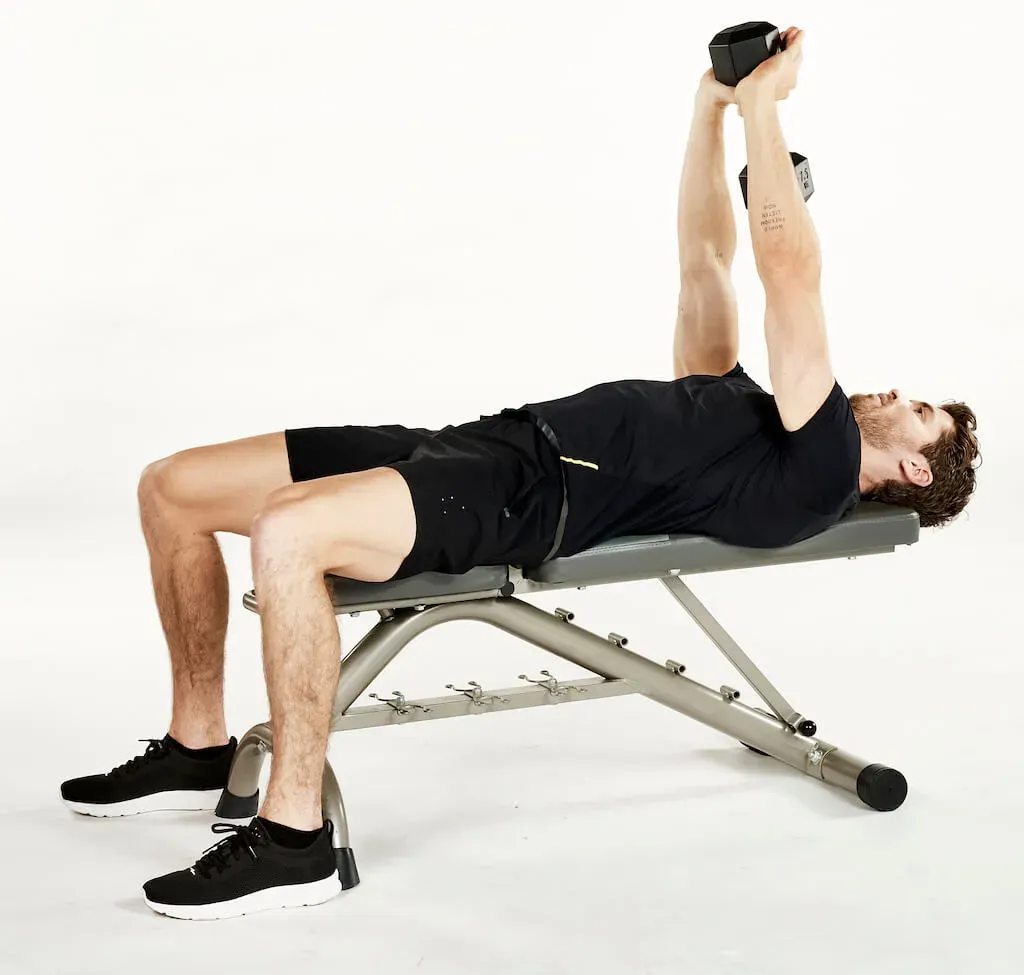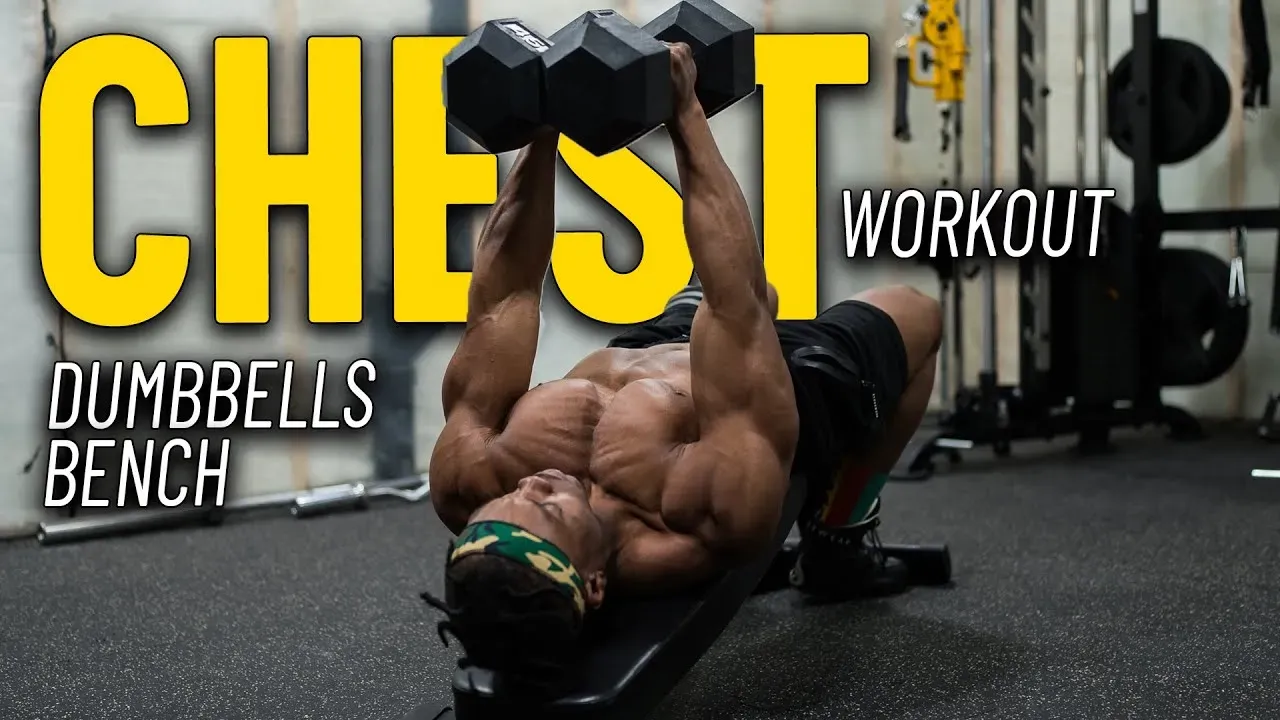Table of Contents
Let's be honest, getting a solid chest workout at home can feel like a puzzle. You might be tired of endless push-ups or wondering if you can actually build anything meaningful without a gym membership. Maybe you've got a bench gathering dust in the corner and aren't quite sure how to make the most of it for your pecs.
Why Use a Bench for Your AtHome Chest Workout?

Why Use a Bench for Your AtHome Chest Workout?
Angles Matter for Muscle Growth
Look, doing push-ups on the floor is fine, great even, for a start. But your chest muscles, the pectoralis major and minor, aren't just flat slabs. They have fibers running in different directions. A flat surface only hits one angle effectively. This is precisely why a bench becomes indispensable for a comprehensive chest workout at home with bench. It lets you elevate or decline your body, hitting those upper and lower chest fibers that floor exercises often miss. Think of it like painting a wall – you need different brushes for the corners and edges, not just one big roller for the middle. Ignoring angles leaves parts of your chest underdeveloped, which looks weird and limits your strength.
Stability and Loading Potential
Floor exercises, while convenient, limit how much resistance you can effectively use. Once you can do 50 push-ups, adding more reps often just becomes an endurance test, not a strength builder. A bench provides a stable platform. This stability means you can safely handle heavier dumbbells or barbells than you ever could precariously balancing on instability balls or hoping your furniture holds up. More load potential directly translates to greater muscle stimulus and growth. It’s simple physics and physiology; lift heavier (safely), get stronger, build bigger. That’s the core benefit of incorporating a bench into your chest workout at home with bench.
Here's a quick look at how angles change things:
- Flat Bench: Targets the overall chest, good for foundational strength.
- Incline Bench: Hits the upper chest more, crucial for a full look.
- Decline Bench (if your bench does it): Focuses on the lower chest.
Beyond the Press: Exercise Variety
A bench isn't just for pressing weights straight up. It unlocks a whole arsenal of exercises. Think dumbbell flyes, which provide a fantastic stretch and target the outer chest fibers. You can do single-arm presses for unilateral strength correction or even pullovers to work the chest and lats simultaneously. Trying to replicate these movements effectively on the floor is awkward, if not impossible. Adding a bench dramatically expands your exercise library, making your chest workout at home with bench far more versatile and less likely to get stale. Variety keeps muscles guessing and boredom at bay – essential for consistent progress.
Essential Gear for Your Chest Workout at Home with Bench

Essential Gear for Your Chest Workout at Home with Bench
Choosing the Right Bench (It Matters More Than You Think)
Alright, let's talk about the star of the show: the bench. You're not building a cathedral here, but a flimsy, unstable bench is worse than useless; it's a hazard. Look for something sturdy. If it wobbles when you sit on it, walk away. An adjustable bench is ideal for a proper chest workout at home with bench because, as we covered, angles are everything. Flat is good, but incline and maybe even decline options unlock a full range of motion and target different parts of the muscle. Don't cheap out here. This is the foundation of your setup. A decent bench will last years and make a real difference in your training.
Dumbbells: Your Best Friends (or Foes, Depending on the Weight)
Next up are weights. For a chest workout at home with bench, dumbbells are usually the most practical choice. They're versatile, relatively compact, and allow for a greater range of motion compared to a barbell in many home setups. Start with a weight you can control for 8-12 reps with good form. You'll need a few different pairs as you get stronger. Adjustable dumbbells are a lifesaver if space is tight and your budget allows, but a few pairs of fixed-weight dumbbells covering a range from light to challenging will get the job done for your chest workout at home with bench.
As the old saying goes, "You can't build a house without bricks." For your chest workout at home with bench, your weights are the bricks.
Beyond the Basics: Bands and Bodyweight Boosters
While the bench and dumbbells are the core of your chest workout at home with bench, a few extra bits can enhance your routine. Resistance bands can be used for warm-ups, finishers, or even assistance/resistance on exercises. A pair of push-up handles can save your wrists and allow for a deeper stretch if you decide to throw in some floor work. None of this is strictly necessary to start, but they offer ways to add variety and keep challenging yourself as you progress. Think of them as the seasoning on your steak – good without it, but better with.
Top Exercises for Your Chest Workout at Home with Bench
The Cornerstone: Dumbbell Press Variations
so you've got your bench and some weights. Where do you even start for a killer chest workout at home with bench? The absolute foundation is the dumbbell press, and the beauty of having a bench is you're not stuck doing just flat presses. Lie back on the bench with a dumbbell in each hand, palms facing each other or slightly rotated. Lower the weights slowly to the sides of your chest, feeling a good stretch, then press them straight back up. Simple, right? Now, adjust that bench! Incline presses (bench angled up) hammer your upper chest, giving you that coveted "shelf" look. Decline presses (bench angled down, if your bench does it) hit the lower pecs. Don't just pick one; cycle through these angles to ensure you're building a balanced chest. Proper form is non-negotiable here – don't let your elbows flare out too wide and keep control throughout the movement.
Adding Depth and Detail: Flyes and Pullovers
While presses build mass and strength, you need more than just pushing motions for a complete chest. This is where dumbbell flyes come in for your chest workout at home with bench. Lie on the bench (flat or incline), dumbbells in hand, arms extended above your chest with a slight bend in your elbows. Keeping that slight bend, open your arms out to the sides in an arc, feeling the stretch across your chest. Bring them back up the same way, squeezing your pecs at the top. Flyes are excellent for isolating the chest and working the outer fibers, giving your chest that wider appearance. Another often-overlooked gem is the dumbbell pullover. Lie across the bench or lengthwise, holding one dumbbell with both hands above your chest. Lower the weight in an arc behind your head, keeping a slight bend in your elbows, feeling the stretch in your chest and lats. Pull it back over your chest. This movement works the chest, lats, and serratus, adding thickness and helping with overall upper body mobility. Combining these with presses ensures a well-rounded chest workout at home with bench.
Here’s a quick breakdown of what these exercises target:
- Flat Dumbbell Press: Overall Pecs, Triceps, Shoulders
- Incline Dumbbell Press: Upper Pecs, Front Deltoids
- Decline Dumbbell Press: Lower Pecs
- Dumbbell Flyes (Flat/Incline): Outer Pecs, Stretch and Isolation
- Dumbbell Pullover: Pecs, Lats, Serratus, Triceps
How to Structure Your Chest Workout at Home with Bench

How to Structure Your Chest Workout at Home with Bench
Warm-up and Activation Before You Lift
Jumping straight into heavy presses without warming up is like trying to start a cold engine at full throttle. You're asking for trouble. Before you even touch a dumbbell for your chest workout at home with bench, spend 5-10 minutes getting blood flowing and activating those muscles. Light cardio, like jogging in place or jumping jacks, works. Then move to dynamic stretches: arm circles, chest openers (like hugging yourself), and shoulder rotations. Follow this with some specific chest activation. Resistance band pull-aparts are fantastic here, really waking up those upper back and shoulder muscles that help stabilize your pressing movements. A few light sets of the first exercise you plan to do, using just bodyweight or very light dumbbells, also preps your muscles and lets you practice your form. Don't skip this part; it's not glamorous, but it significantly reduces injury risk and improves performance.
Setting Sets, Reps, and Exercise Order
warm-up done. Now for the meat and potatoes: sets, reps, and the flow of your actual chest workout at home with bench. A standard approach is to start with your heaviest compound movement, usually flat or incline dumbbell presses. This is where you can move the most weight and get the most bang for your buck while you're fresh. Aim for 3-4 sets of 6-10 repetitions if your goal is strength and muscle growth. Rest 60-90 seconds between sets. After your main presses, move to other variations like incline presses if you started flat, or decline presses. Then, hit your isolation work like dumbbell flyes for 3-4 sets of 10-15 reps, focusing on that stretch and squeeze. A finisher, like push-ups to failure or band work, can wrap things up. The exact order can vary, but always prioritize the big, heavy lifts when you have the most energy.
Here’s a sample structure to get you started:
- Dynamic Warm-up (5-10 minutes)
- Chest Activation (Resistance Bands or Light Weights)
- Compound Press Variation (e.g., Flat Dumbbell Press): 3-4 sets, 6-10 reps
- Secondary Press Variation (e.g., Incline Dumbbell Press): 3-4 sets, 8-12 reps
- Isolation Exercise (e.g., Dumbbell Flyes): 3-4 sets, 10-15 reps
- Optional Finisher (e.g., Push-ups to failure)
Progressing Your Chest Workout at Home with Bench

Progressing Your Chest Workout at Home with Bench
Making Exercises Harder: Progressive Overload
so you've been doing your chest workout at home with bench for a few weeks, and those initial weights or reps are starting to feel a bit easy. This is exactly what you want! It means you're getting stronger. The fundamental principle for continued muscle growth and strength gains is progressive overload. Simply put, you have to make your muscles work harder over time. The most straightforward way to do this with your bench and dumbbells is to increase the weight. If you were hitting 10 reps easily with 20-pound dumbbells on your flat press, grab the 25s. It might mean doing fewer reps initially, but that's fine. The goal is to continually challenge the muscle. Don't jump too much weight at once, though. Small, consistent increases are key to avoiding injury and ensuring good form.
Another way to apply progressive overload without immediately needing heavier weights is to increase the number of repetitions you do with the current weight. If you were doing 3 sets of 10 reps, try for 3 sets of 11 or 12. Once you can hit the top end of your target rep range (like 12 reps) comfortably for all sets, then it's time to think about bumping up the weight. You can also add an extra set to an exercise you feel you can handle. For instance, turning 3 sets of flat presses into 4 sets. Consistency in applying this principle to your chest workout at home with bench is what builds serious muscle over months and years, not just weeks.
Here are common ways to apply progressive overload:
- Increase the weight used.
- Increase the number of repetitions per set.
- Increase the number of sets per exercise or workout.
- Decrease the rest time between sets (makes the work feel harder).
- Improve your form (allows muscles to work more efficiently).
- Increase the range of motion (if your mobility allows).
Beyond Just Adding Weight: Other Ways to Progress
While adding weight is the classic method, it's not the only trick up your sleeve for your chest workout at home with bench. You can also manipulate other variables. Try slowing down the tempo of your reps. Take 3-4 seconds to lower the weight on a press or flye, feeling the muscle stretch under tension, before pressing back up. This increases time under tension, forcing the muscle to work harder. Pause at the bottom of a rep, or squeeze your chest hard at the top for a second or two. These small changes can make a familiar weight feel significantly more challenging and stimulate new growth.
Consider changing the exercise variation itself. If you've been doing flat dumbbell presses, switch to incline presses for a few weeks to prioritize the upper chest. Or incorporate single-arm presses to challenge your core stability and address potential strength imbalances. You can also add resistance bands to your dumbbell presses for accommodating resistance – the band makes the top of the movement harder where the muscle is strongest. Don't get stuck in a rut doing the exact same thing every week. Smart variation keeps your chest workout at home with bench effective and interesting, ensuring you keep making gains even when you don't have heavier dumbbells immediately available.
Your Bench Isn't Just for Laundry Anymore
So there you have it. A bench isn't a magic bullet, but it sure beats trying to build a decent chest with just push-ups and good intentions. We've covered why a bench matters, the minimal gear you'll actually use, and some solid movements that aren't rocket science. Structuring your routine and sticking with it is the part that actually requires effort, not just buying equipment. Progress takes time and consistency, not just reading about it. Get to work.
